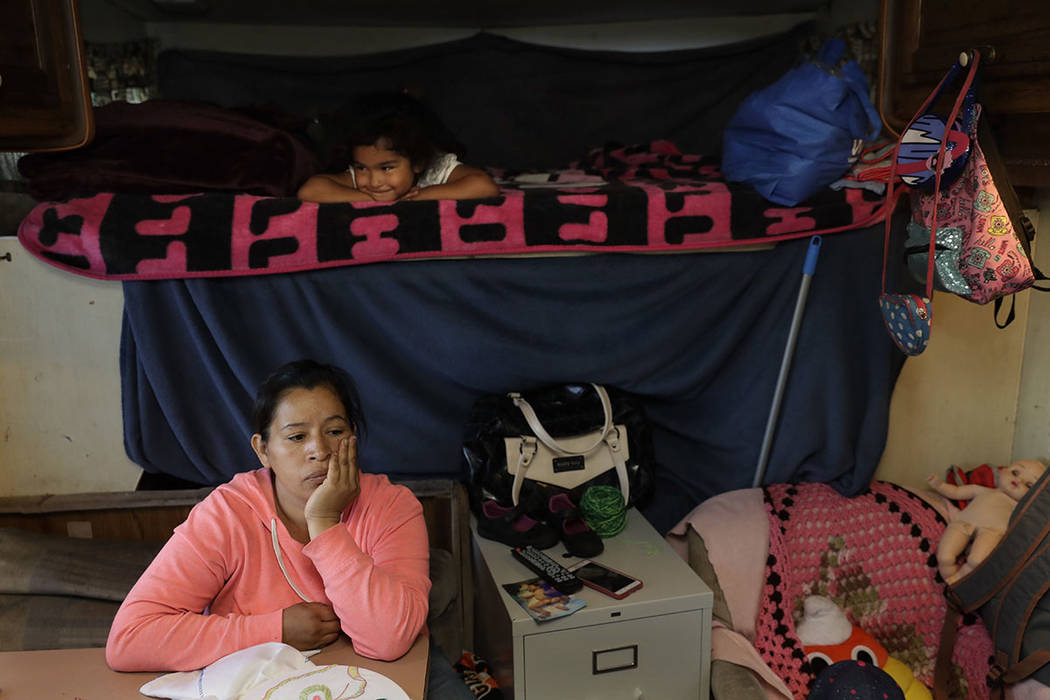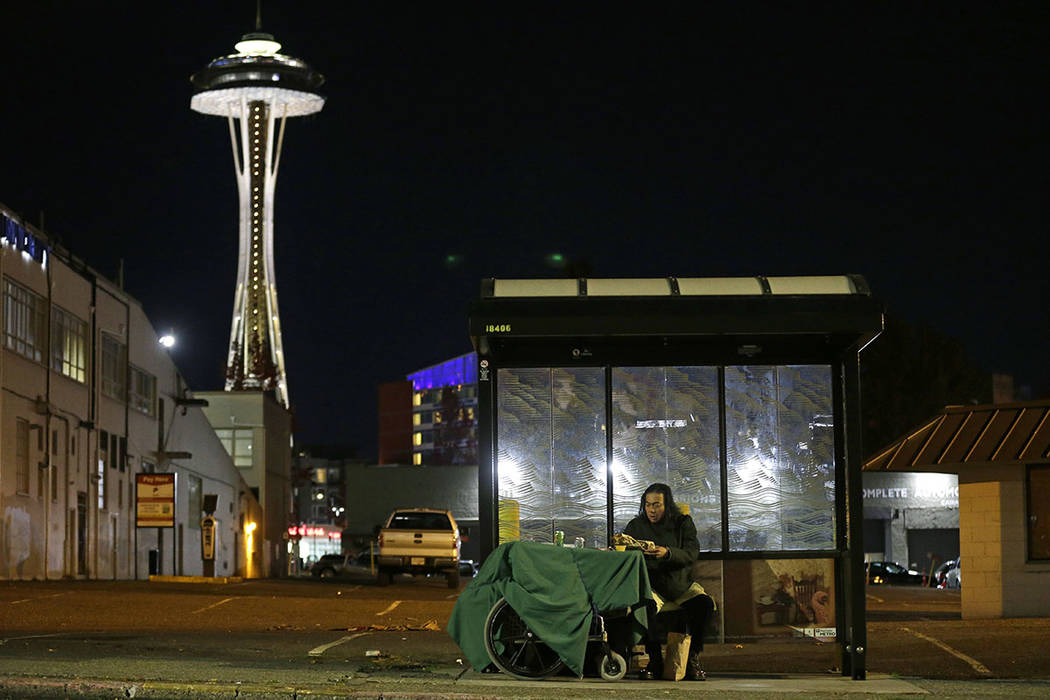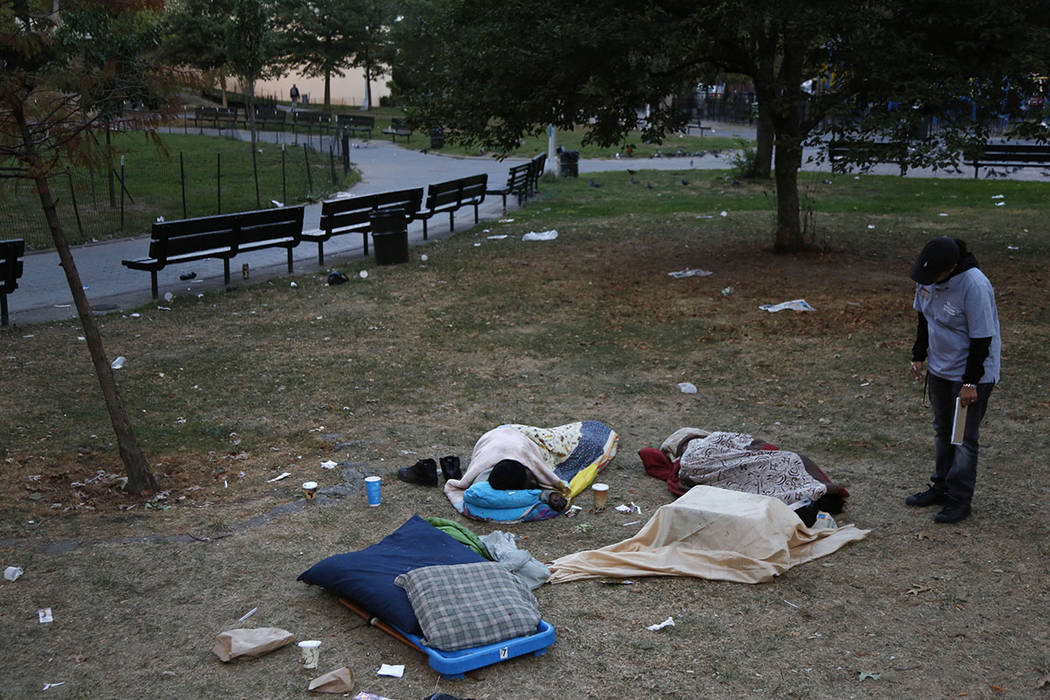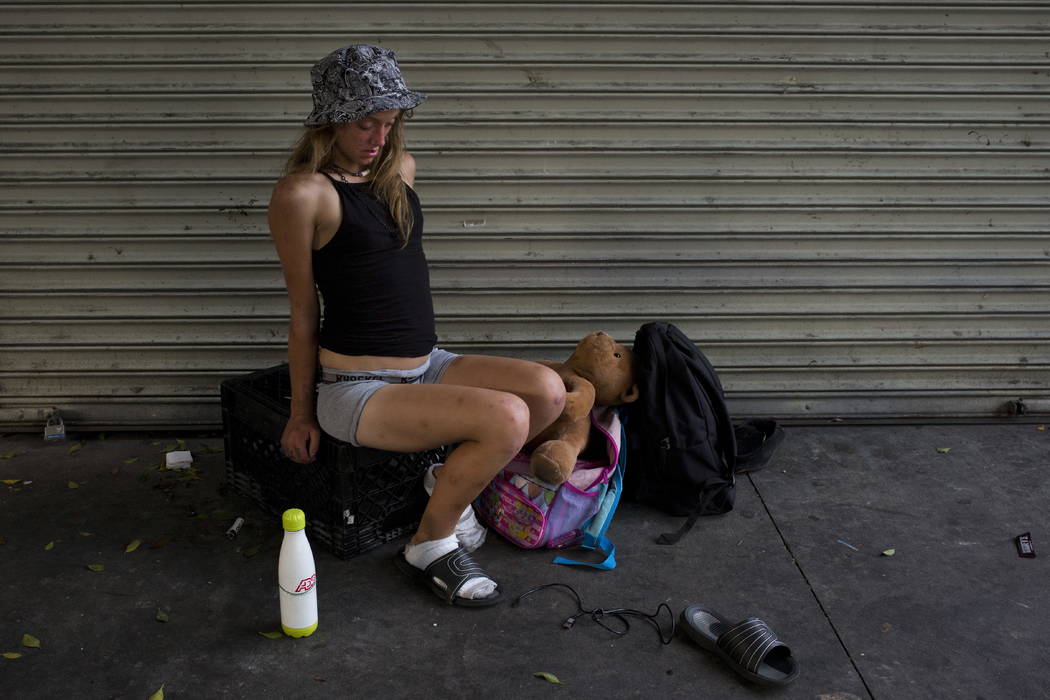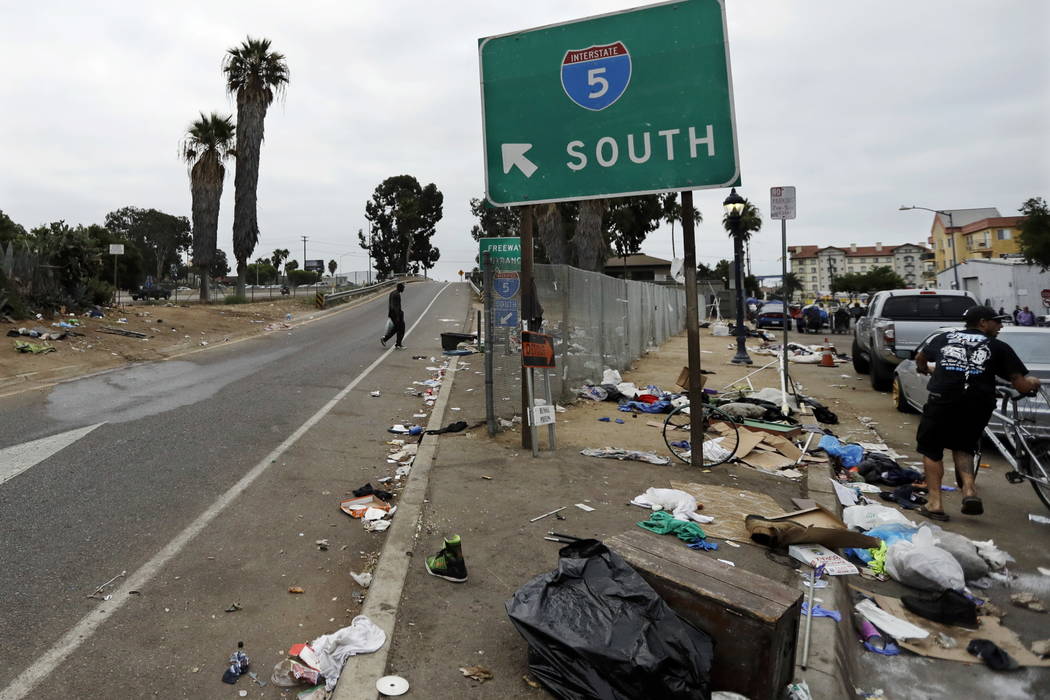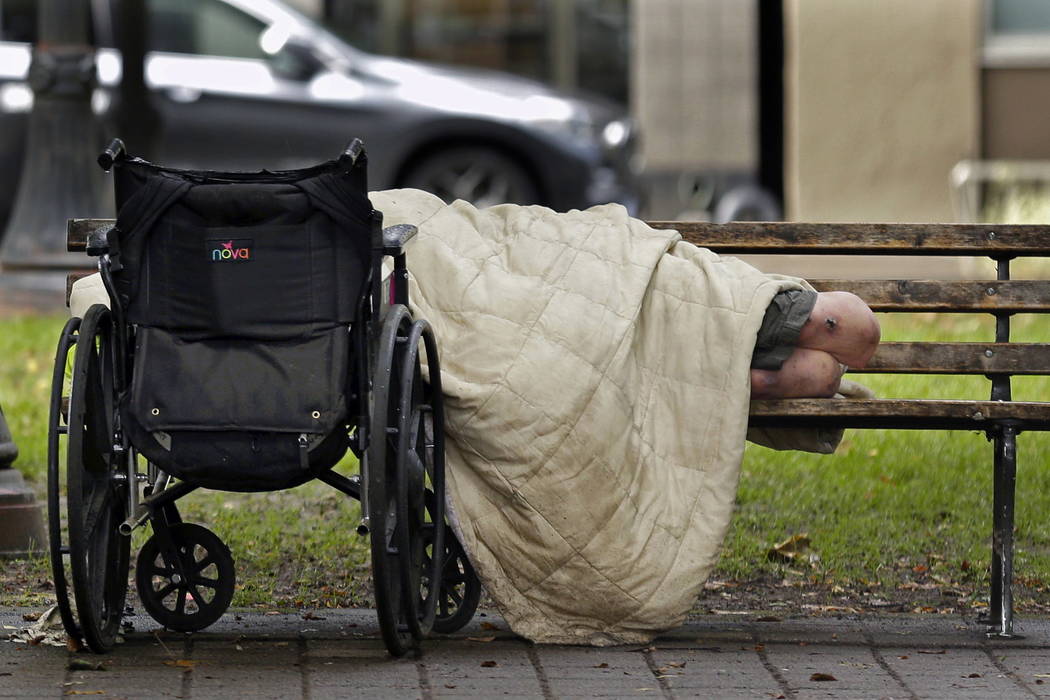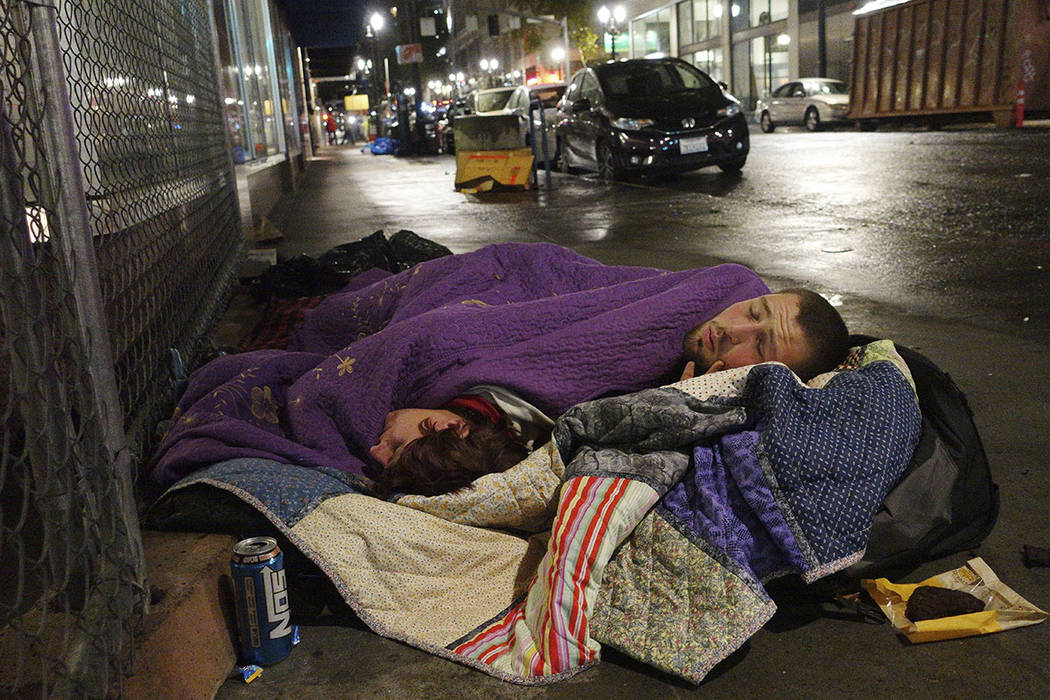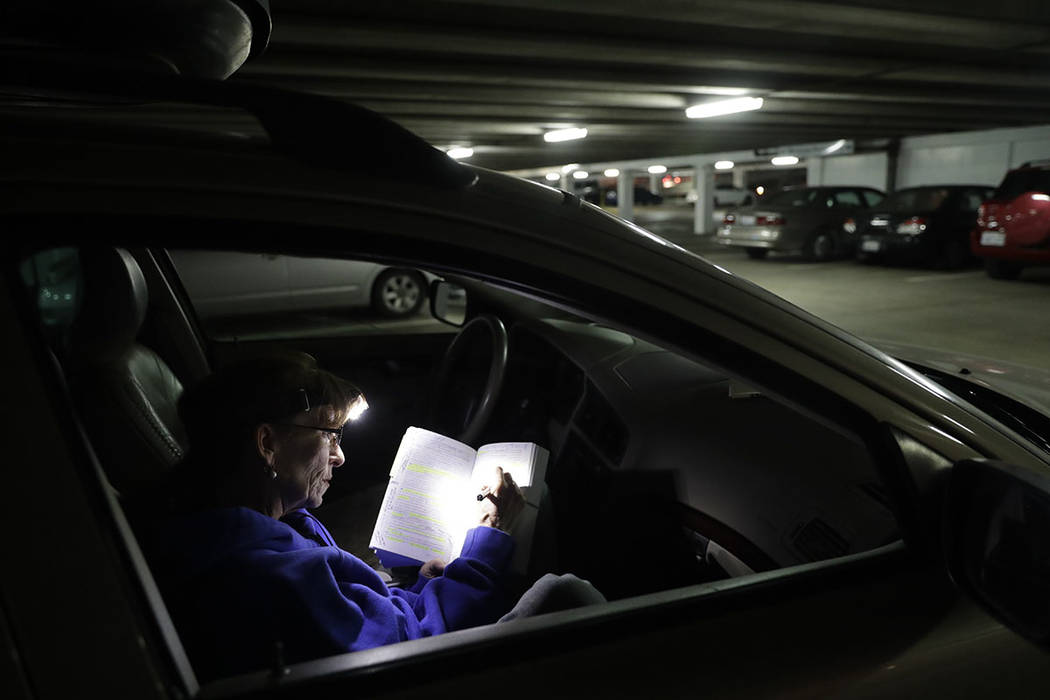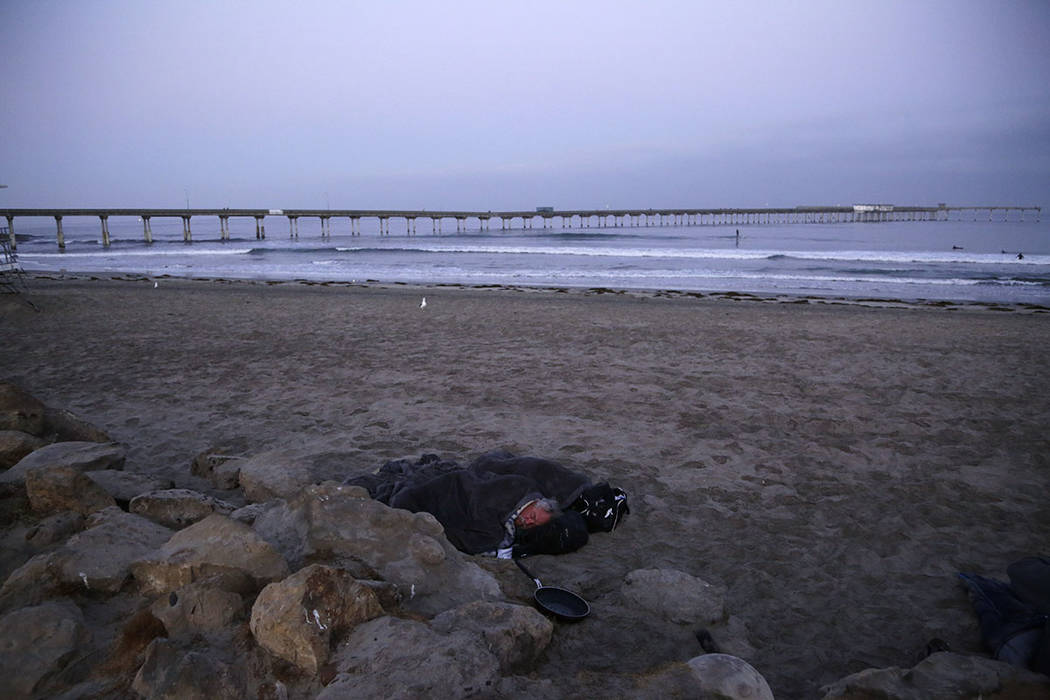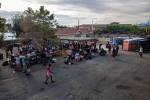West Coast cities struggle to combat soaring homelessness
SEATTLE — In a park in the middle of a leafy, bohemian neighborhood where homes list for close to $1 million, a tractor’s massive claw scooped up the refuse of the homeless - mattresses, tents, wooden frames, a wicker chair, an outdoor propane heater. Workers in masks and steel-shanked boots plucked used needles and mounds of waste from the underbrush.
Just a day before, this corner of Ravenna Park was an illegal home for the down and out, one of 400 such encampments that have popped up in Seattle’s parks, under bridges, on freeway medians and along busy sidewalks. Now, as police and social workers approached, some of the dispossessed scurried away, vanishing into a metropolis that is struggling to cope with an enormous wave of homelessness.
That struggle is not Seattle’s alone. A homeless crisis of unprecedented proportions is rocking the West Coast, and its victims are being left behind by the very things that mark the region’s success: soaring housing costs, rock-bottom vacancy rates and a roaring economy that waits for no one. All along the coast, elected officials are scrambling for solutions.
“I’ve got economically zero unemployment in my city, and I’ve got thousands of homeless people that actually are working and just can’t afford housing,” said Seattle City Councilman Mike O’Brien. “There’s nowhere for these folks to move to. Every time we open up a new place, it fills up.”
The rising numbers of homeless people have pushed abject poverty into the open like never before and have overwhelmed cities and nonprofits. The surge in people living on the streets has put public health at risk, led several cities to declare states of emergency and forced cities and counties to spend millions — in some cases billions — in a search for solutions.
— San Diego now scrubs its sidewalks with bleach to counter a deadly hepatitis A outbreak that has spread to other cities and forced California to declare a state of emergency last month.
— In Anaheim, home to Disneyland, 400 people sleep along a bike path in the shadow of Angel Stadium.
— Organizers in Portland, Oregon, lit incense at a recent outdoor food festival to cover up the stench of urine in a parking lot where vendors set up shop.
Homelessness is not new on the West Coast. But interviews with local officials and those who serve the homeless in California, Oregon and Washington — coupled with an Associated Press review of preliminary homeless data — confirm it’s getting worse. People who were once able to get by, even if they suffered a setback, are now pushed to the streets because housing has become so expensive.
All it takes is a prolonged illness, a lost job, a broken limb, a family crisis. What was once a blip in fortunes now seems a life sentence.
Rising housing prices tied to rising homelessness
With alarming frequency, the West Coast’s newly homeless are people who were able to survive on the margins — until those margins moved.
For years, Stanley Timmings, 62, and his 61-year-old girlfriend, Linda Catlin, were able to rent a room in a friend’s house on their combined disability payments.
Last spring, that friend died of colon cancer and the couple was thrust on Seattle’s streets.
Timmings used their last savings to buy a used RV for $300 and spent another $300 to register it. They bought a car from a junk yard for $275.
Now, the couple parks the RV near a small regional airport and uses the car to get around.
They have no running water and no propane for the cook stove. They go to the bathroom in a bucket and dump it behind a nearby business. They shower and do laundry at a nonprofit and buy water at a grocery depot. After four months, the stench of human waste inside the RV is overwhelming. Every inch of space is crammed with their belongings: jugs of laundry detergent, stacks of clothes, pots and pans, and tattered paperback novels. They are exhausted, scared and defeated, with no solution in sight.
“Between the two of us a month, we get $1,440 in disability. We can’t find a place for that,” he said. “Our income is (about) $17,000 … a year. That puts us way out of the ballpark, not even close. It might have been enough but anymore, no. It’s not.”
A new study funded by the real estate information firm Zillow and conducted by the University of Washington found a strong link between rising housing prices and rising homelessness numbers. A 5 percent rent increase in Los Angeles, for example, would mean about 2,000 more homeless people there, the authors said.
Nationally, homelessness has been trending down, partly because governments and nonprofit groups have gotten better at moving people into housing. That’s true in many West Coast cities, too, but the flow the other direction is even faster. And on the West Coast, shelter systems are smaller.
“If you have a disability income, you make about $9,000 a year and renting a studio in Seattle is about $1,800 a month and so that’s twice your income,” said Margaret King, director of housing programs for DESC, a nonprofit that works with Seattle’s homeless.
“So everybody who was just hanging on because they had cheap rent, they’re losing that … and they wind up outside. It’s just exploded.”
Struggling in Silicon Valley
Nowhere is that more evident than California’s Silicon Valley, where high salaries and a tight housing market have pushed rent out of reach for thousands. In ever-shifting communities of the homeless, RVs and cars cluster by the dozens in the city where Google built its global headquarters and just blocks from Stanford University.
Ellen Tara James-Penney, a lecturer at San Jose State University, has been sleeping out of a car for about a decade, ever since she lost her housing while an undergraduate at the school where she now teaches four English courses, a job that pays $28,000 a year. Home is an old Volvo.
“I’ve basically been homeless since 2007, and I’m really tired,” she said. “Really tired.”
She actually got her start in the high tech industry, before being laid off during the tech meltdown of the early 2000s. Like many who couldn’t find work, she went to college, accumulating tens of thousands of dollars in student debt along the way.
Now 54, she grades papers and prepares lesson plans in her car. Among her few belongings is a pair of her grandmother’s fancy stiletto pumps, a reminder to herself that “it’s not going to be like this forever.”
Increased housing costs aren’t just sweeping up low-income workers: The numbers of homeless youth also is rising.
A recent count in Los Angeles, for example, found that those ages 18 to 24 were the fastest-growing homeless group by age, up 64 percent, followed by those under 18. Los Angeles and other cities have made a concerted effort to improve their tallies of homeless youth, which likely accounts for some of the increase.
One of the reasons is the combined cost of housing and tuition, said Will Lehman, policy supervisor at Los Angeles Homeless Services Authority. A recent study by the University of Wisconsin found that one in five Los Angeles Community College District students is homeless, he said.
“They can pay for books, for classes but just can’t afford an apartment. They’re choosing to prioritize going to school,” Lehman said. “They don’t choose their situation.”
Problems in Pacific Northwest
Michael Madigan opened a new wine bar in Portland a few years ago overlooking a ribbon of parks not far from the city’s trendy Pearl District.
Business was good until, almost overnight, dozens of homeless people showed up on the sidewalk. A large encampment on the other side of the city had been shut down, and its residents moved to the park at his doorstep.
“We literally turned the corner one day … and there were 48 tents set up on this one block that hadn’t been there the day before,” he said.
Madigan’s business dropped 50 percent in four months and he closed his bar. There are fewer homeless people there now, but the campers have moved to a bike path that winds through residential neighborhoods in east Portland, prompting hundreds of complaints about trash, noise, drug use and illegal camping.
Rachel Sterry, a naturopathic doctor, lives near that path and sometimes doesn’t feel safe when she’s commuting by bike with her 1-year-old son. Dogs have rolled in human feces in a local park; recent improvements she’s made to her small home are overshadowed by the line of tents and tarps a few dozen yards from her front door, she said.
“I have to stop and get off my bike to ask people to move their card game or their lounge chairs or their trash out of the way when I’m just trying to get from point A to point B,” she said. “If I were to scream or get hurt, nobody would know.”
For Seattle resident Elisabeth James, the reality check came when a homeless man forced his way into a glass-enclosed ATM lobby with her after she swiped her card to open the door for after-hours access. After a few nerve-wracking minutes, the man left the lobby but stayed outside, banging on the glass. Police were too busy to respond so James called her husband, who scared the man away and walked her home. The man, she believes, just wanted to get out of the rain.
A neighborhood pocket park has become a flashpoint, too: When James took her 2-year-old grandchild there, she saw people injecting heroin.
“I’m not a NIMBY person, but I just think that we can do so much more,” said James, who founded an activist group called Speak Out Seattle last year. “I wanted to do something that was effective, that brought frustrated people together to find solutions. We’re spending a lot of money to house people and we’re getting a bigger problem.”
The crisis is not limited to large metropolises. In Oregon City, a suburban, working-class town of 36,000 people, the police department this summer added a full-time position for a homeless outreach officer after roughly half the calls concerned trash, trespassing, human waste and illegal encampments.
The city has no overnight shelters and never had a significant homeless population until about three years ago.
On a recent fall day, officer Mike Day tromped into a greenbelt across from a strip mall to check on a man he recently connected with a counselor, calmed an intoxicated man and arranged emergency care for a man who was suicidal.
“How many social workers have you met that go into the woods to follow up with the homeless population and to help with mental health? This is a bit of a hybrid position, certainly, and maybe it’s not exactly the role of a police officer - but it’s a creative approach to find a solution to the problem,” he said.
The question was, “What can we do differently? Because right now, it’s not working.”
Solving the problem
All along the West Coast, local governments are scrambling to answer that question — and taxpayers are footing the bill.
Voters have approved more than $8 billion in spending since 2015 on affordable housing and other anti-homelessness programs, mostly as tax increases. Los Angeles voters, for example, approved $1.2 billion to build 10,000 units of affordable housing over a decade to address a ballooning homeless population that’s reached 34,000 people within city limits.
Seattle spent $61 million on homeless-related issues last year, and a recent budget proposal would increase that to $63 million. Four years ago, the city spent $39 million on homelessness. Sacramento has set a goal of moving 2,000 people off the streets in the next three years and may place a housing bond before voters in 2018.
Appeals for money have angered residents who see tent encampments growing in their cities despite more spending.
“Those are like whack-a-mole because they just sprout up and then they disappear and then they sprout up somewhere else,” said Gretchen Taylor, who helped found the Neighborhood Safety Alliance of Seattle in 2016.
Seattle is initiating competitive bidding among nonprofit organizations for city dollars going toward homelessness programs. It’s also pouring money into “rapid rehousing,” a strategy that houses people quickly and then provides rental assistance for up to 18 months.
Like San Francisco, Seattle has started opening 24-hour, “low-barrier” shelters that offer beds even if people are abusing drugs, have a pet or want to sleep together as a couple. But the city’s first 24-hour shelter has only 75 beds, and turnover is extremely low.
A team of specially trained police officers and social workers has also been visiting homeless camps to try to place people in shelter. After repeated visits — and with 72 hours of notice — the city cleans out the camps and hauls away abandoned belongings.
These efforts are starting to yield results, although the overall number of homeless people continues to swell.
Nearly 740 families moved into some type of shelter between October 2016 and August 2017, and 39 percent of the people contacted by the new police teams wind up sheltered, according a recent city homeless report. That’s an improvement from a 5 percent shelter rate 18 months ago, said Sgt. Eric Zerr, who leads that effort.
But the approach has its detractors. The American Civil Liberties Union filed a lawsuit alleging the sweeps violate the constitutional protections against unreasonable search and seizure. And a debate is raging about whether the sweeps are necessary “tough love” or a cruel policy that criminalizes poverty in a city with a reputation for liberalism.
“When a city can’t offer housing, they should not be able to sweep that spot unless it’s posing some sort of significant health and safety issue,” said Sara Rankin, a professor with the Homeless Rights Advocacy Project at the Seattle University School of Law.
“If someone doesn’t have a place to go, you can’t just continue to chase them from place to place.”
Among the AP's findings:
— Official counts taken earlier this year in California, Oregon and Washington show 168,000 homeless people in the three states, according to an AP tally of every jurisdiction in those states that reports homeless numbers to the U.S. Department of Housing and Urban Development. That is 19,000 more than were counted two years ago, although the numbers may not be directly comparable because of factors ranging from the weather to new counting methods.
— During the same period, the number of unsheltered people in the three states — defined as someone sleeping outside, in a bus or train station, abandoned building or vehicle — has climbed 18 percent to 105,000.
— Rising rents are the main culprit. The median one-bedroom apartment in the San Francisco Bay Area is significantly more expensive than it is in the New York City metro area, and apartments in San Francisco are listed at a higher price than those in Manhattan.
— Since 2015, at least 10 cities or municipal regions in California, Oregon and Washington — and Honolulu, as well — have declared states of emergency due to the rise of homelessness, a designation usually reserved for natural disasters.



